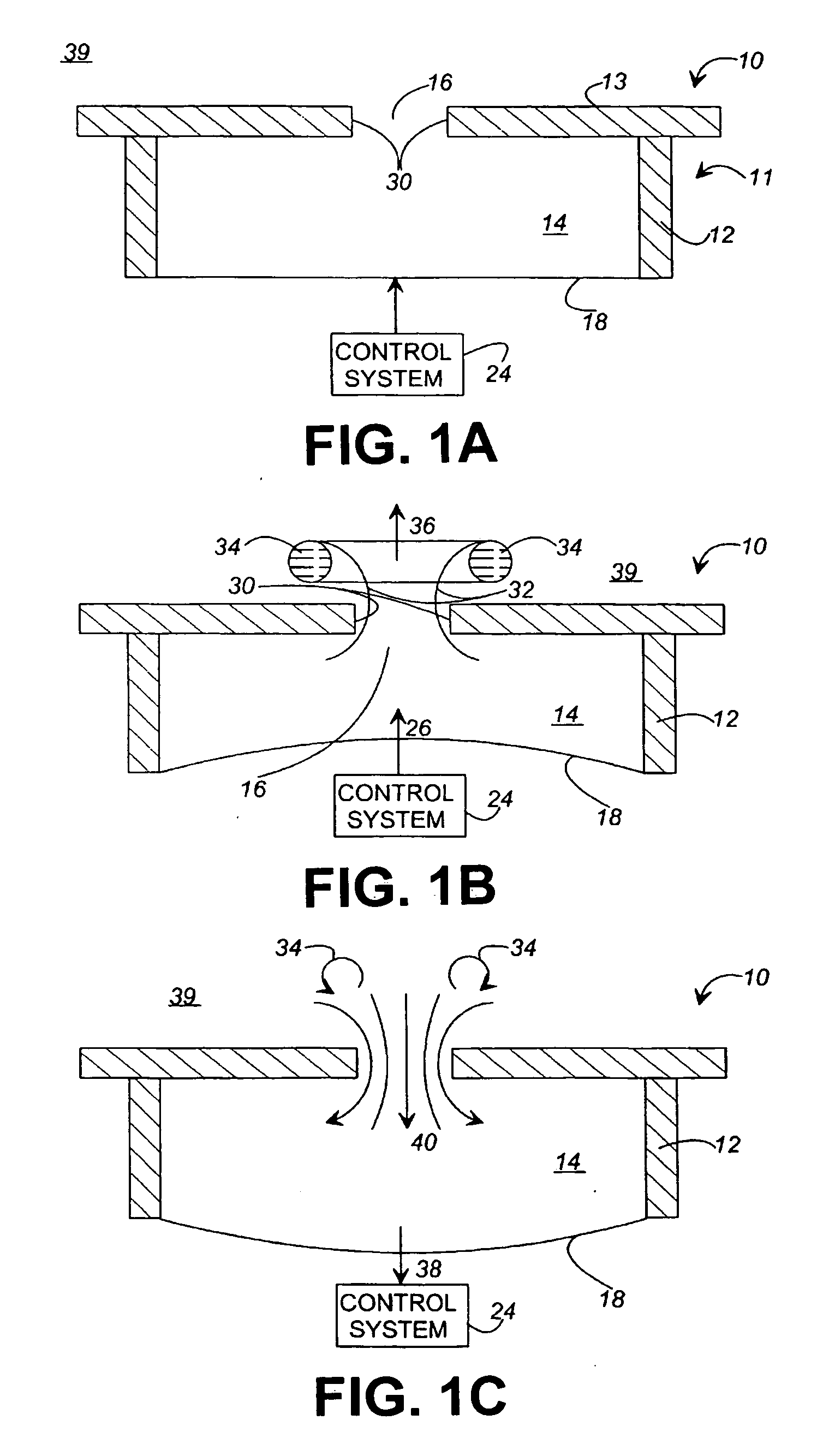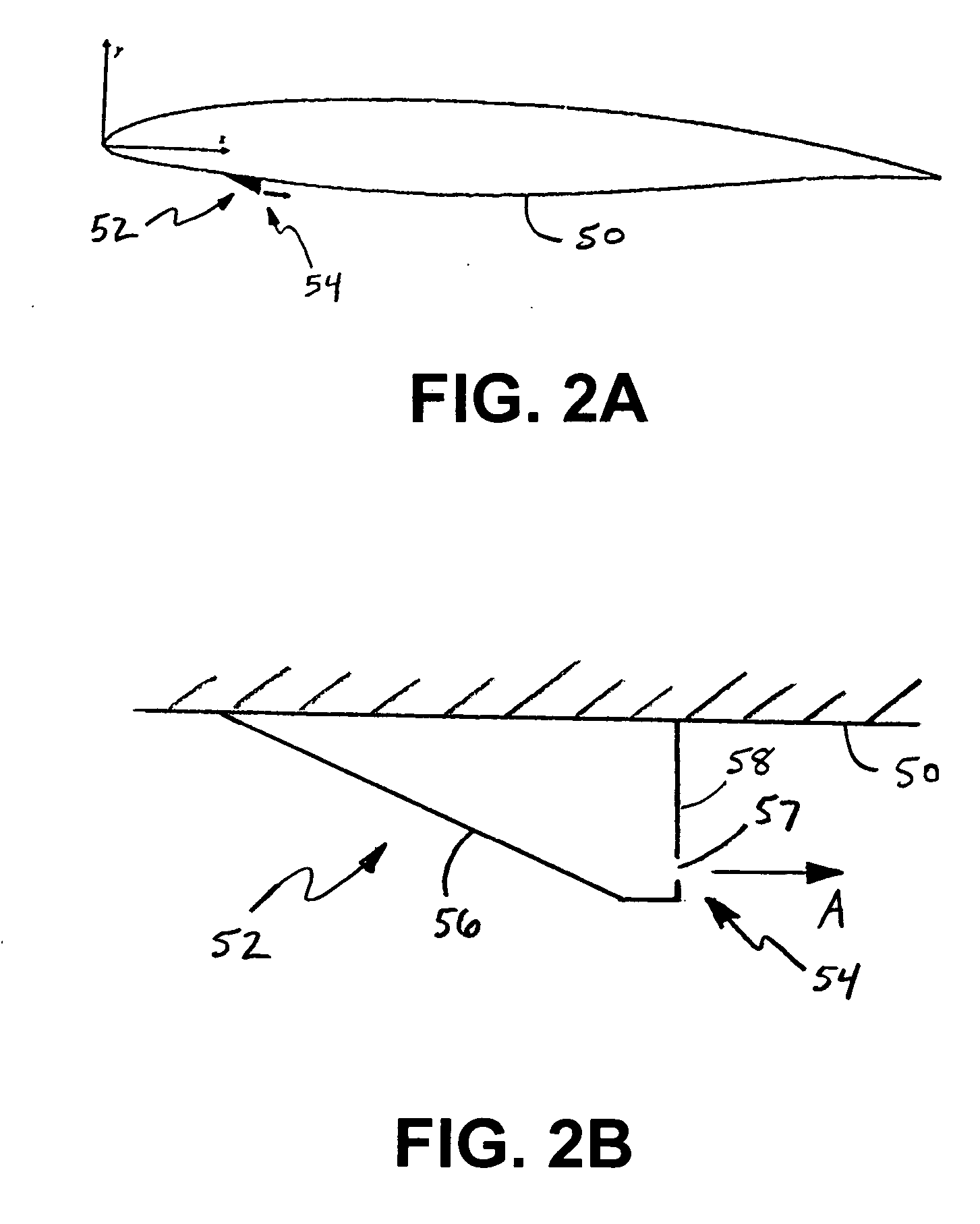Airfoil performance modification using synthetic jet actuators
- Summary
- Abstract
- Description
- Claims
- Application Information
AI Technical Summary
Benefits of technology
Problems solved by technology
Method used
Image
Examples
Embodiment Construction
[0055] As will be described in detail here, the present invention involves the use of synthetic jet actuators positioned to modify fluid flow about various aerodynamic surfaces. Particularly, the present invention is concerned with modifying performance of solid bodies at relatively low angles of attack wherein the baseline flow is fully attached. However, the present invention also may have application to solid bodies, e.g. lifting surfaces, at higher angles of attack. The present disclosure is not intended to limit implementations to only low angle of attack applications. In this regard, various exemplary embodiments of systems and methods for modifying fluid flowing over solid bodies will be described.
[0056] As mentioned previously, strategies for active flow control on lifting surfaces have primarily focused on mitigation of partial or complete flow separation where the separating shear layer is dominated by a strong coupling to the instability of the wake which leads to the fo...
PUM
 Login to View More
Login to View More Abstract
Description
Claims
Application Information
 Login to View More
Login to View More - R&D
- Intellectual Property
- Life Sciences
- Materials
- Tech Scout
- Unparalleled Data Quality
- Higher Quality Content
- 60% Fewer Hallucinations
Browse by: Latest US Patents, China's latest patents, Technical Efficacy Thesaurus, Application Domain, Technology Topic, Popular Technical Reports.
© 2025 PatSnap. All rights reserved.Legal|Privacy policy|Modern Slavery Act Transparency Statement|Sitemap|About US| Contact US: help@patsnap.com



